Gabriel Loppé (1825-1913), artist, alpinist, photographer and voyager

Never without his palette and paintbrushes
In Chamonix, we have the extraordinary good fortune to rub shoulders with the majestic paintings of this famous artist-mountaineer, who excelled in the representation of glaciers and snow. What do we know of Gabriel Loppé and his legacy?
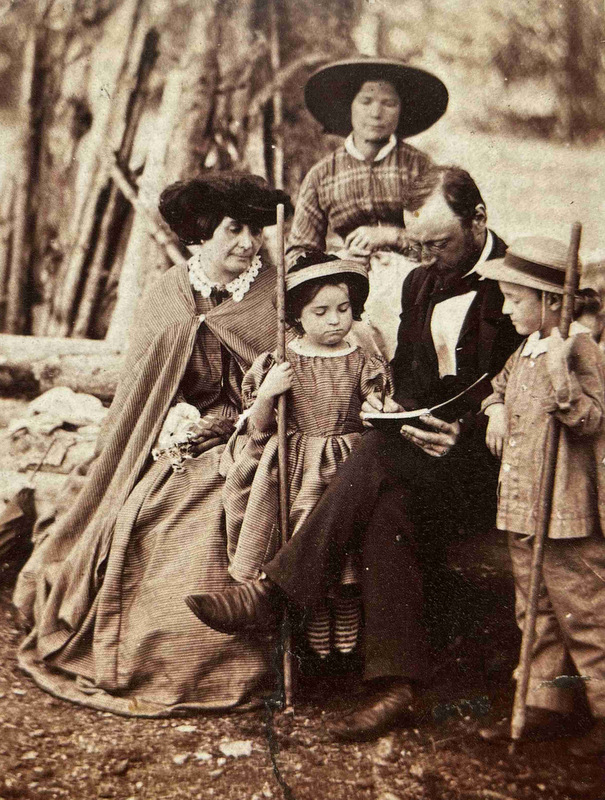
Gabriel Loppé with his family in Chamonix
Although he is often labeled as a pupil of Calame and his rival François Diday, Loppé is more of a self-taught artist. Born in Montpellier, Gabriel was a boarder in Paris from the age of 10. In 1846, during an excursion to Meiringen in Switzerland, he met the mountaineer Beresford Walker who introduced him to the joys and dangers of mountaineering.
In a letter dated 1909, Loppé writes:
“It was a revelation when, after 2 days, I found myself at the Strahleck pass, between the Schreckhorn and the Finsteraarhorn. It was one of the most vivid impressions of nature that I have ever received in the Alps. It was September 9, 1846, 63 years ago and I remember it as if it were the last month"
Loppé becomes the first painter to work at high altitude, taking advantage of his expeditions and earning the right to be considered the founder of the school of painter-alpinists, which established itself in Savoy at the end of the 19th century.
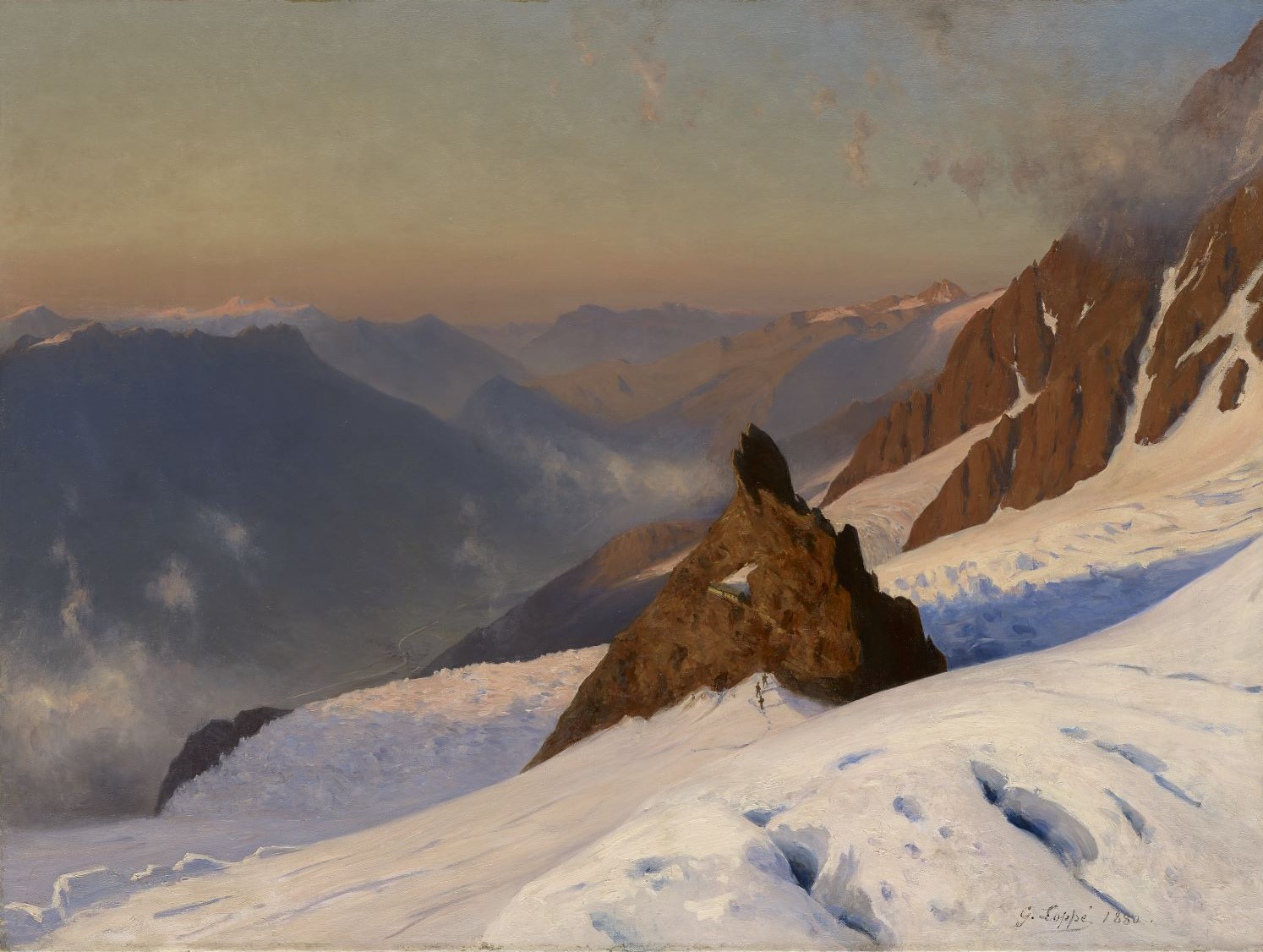
La Cabane des Grands Mulets
In order to study and better render the light and the atmosphere of the mountain at different times of the day, Loppé did not hesitate to spend several days at altitude. The celebrated mountaineer and explorer Sir Douglas Freshfield recalled that Loppé could sit painting for so long that his trouser turn-ups froze and had to be freed with an ice axe.
Loppé produced an impressive quantity of works: canvases of different formats, some monumental, representing glacier ascents with the inclusion of tiny characters, gaping crevasses, glacial lakes, valleys under the snow. Loppé's paintings were, and still are, famous for their atmosphere and their spontaneity and were exhibited many times in London and Paris. His paintings are sold all over the world.
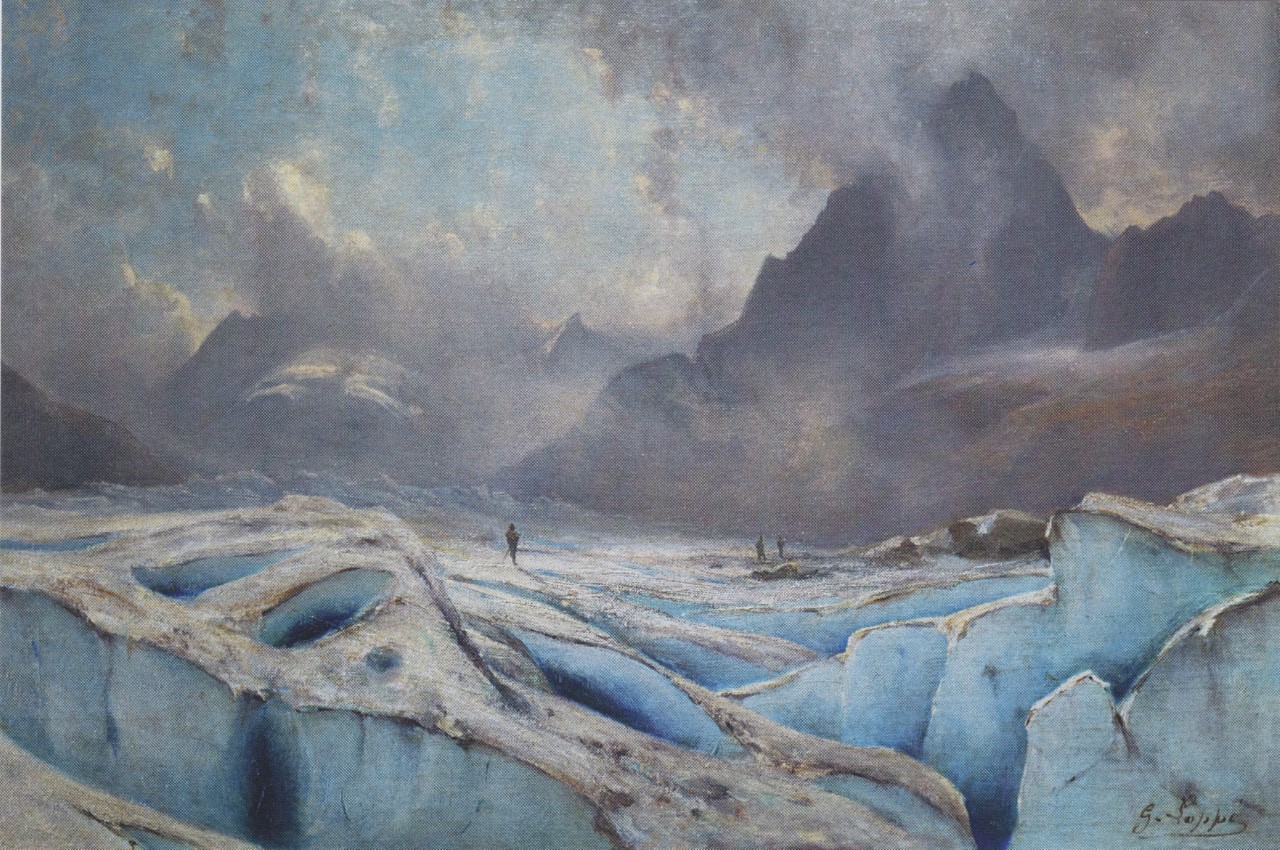
Mer de Glace et Grands Charmoz, coll. privé
His first exhibition was held in Geneva in 1852 – at the time he was living in Annecy with his first wife Marguerite and their three children. He subsequently moved to Geneva in 1862.
Loppé, ambassador to Chamonix
Gabriel Loppé first discovered Chamonix in 1849, at the age of 24. From 1851, he spent every summer there - over fifty seasons of mountaineering and painting in Chamonix.
Loppé was fascinated by the glacial landscapes of the Chamonix valley and by the Mont Blanc of which he made around 40 ascents.
British mountaineer and writer Sir Leslie Stephen joked:
'Gabriel Loppé is the court painter to His Majesty Mont Blanc'.
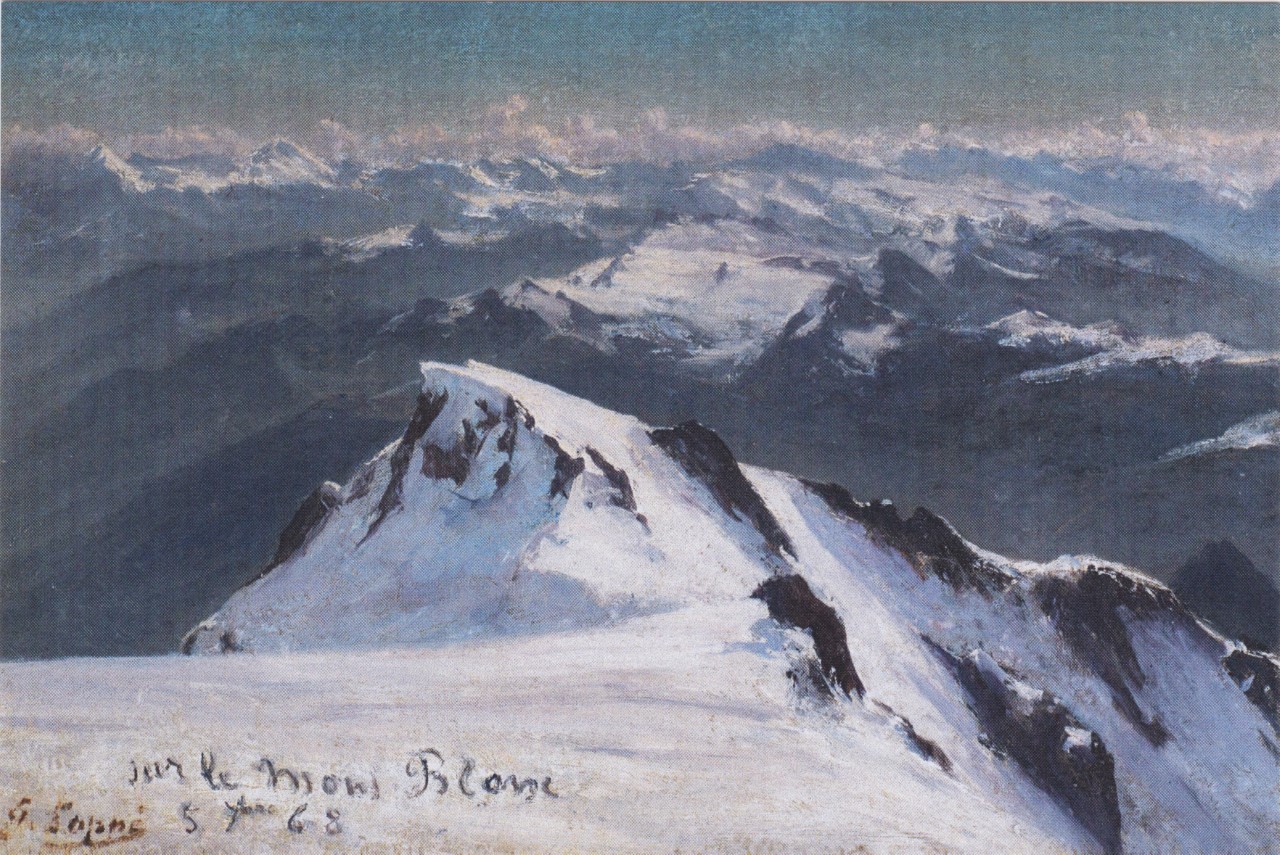
Summit of Mont Blanc and view to Mont Blanc de Courmayeur
On many occasions he stayed at the Grands Mulets hut or on the Col du Géant. The power of meteorological variations at altitude and the resulting atmospheres surprised and moved him. The summit of the Montagne de la Côte, where he regularly set up his small camp, became known as the Château de Loppé.
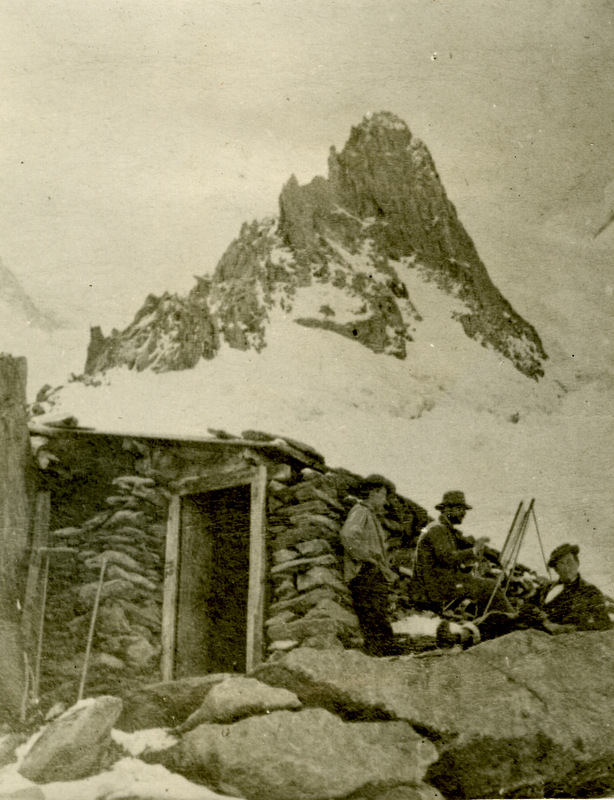
Grands Mulets hut
He developed strong ties of friendship with the Chamoniard community: the Tairraz family, François Couttet, known as "Baguette", who he encouraged to extend his house in order to rent rooms (this was the genesis of the Couttet hotel). His appointed guide was Benoît Simond aka "Benoni".
In 1865, Loppé met the Prefect of Haute-Savoie to evoke the necessity to revise the regulations of the Compagnie des Guides de Chamonix. He campaigned to improve the condition of guides and did not hesitate to assist mountaineers who were injured or in difficulty. He was often the initiator of subscriptions to help families affected by these tragedies.
In 1870, Loppé opened a gallery in Chamonix which he named: “Peinture Alpestre Gabriel Loppé”. Each summer during his lifetime, he exhibited around sixty paintings, some of monumental dimensions (4 m high x 3 m wide). He hired a young girl from Chamonix, Joséphine, to run the gallery. When his granddaughter Gabrielle inherited the Gallery in 1925 it became the Loppé Museum. Some Chamonix residents still remember this old lady lovingly preserving her grandfather's paintings. After the death of the latter in 1978, the museum was sold and transformed into a dwelling.
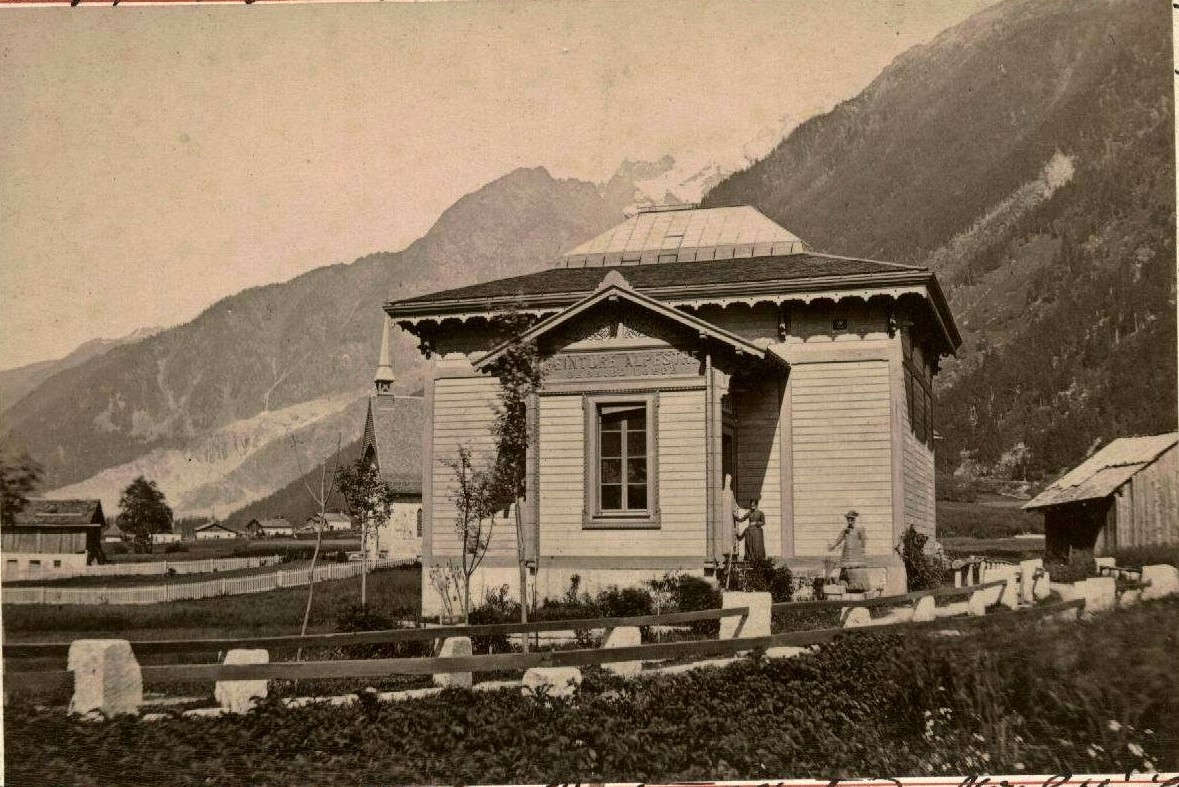
The exhibition gallery in Chamonix
In 1981, a local association, 'Les Amis du Vieux Chamonix', purchased around forty of Loppé's works. Some of these superb acquisitions can be seen in the salons of the Majestic (former Palace located in the centre of Chamonix).
The English Connection
In London, Gabriel Loppé was a formidable ambassador for the Chamonix valley thanks to his role within the Alpine Club.
In the mid-1800s, tourists were mainly upper-class and aristocratic English. Gabriel Loppé became friends with many of them, notably the writer Leslie Stephen, the father of Virginia Woolf, the lawyer Alfred Wills, latterly judge at the High Court of Justice, the cartographer Adams Reilly, the draftsman and engraver Edward Whymper and the geologist James Eccles. Having lost his first wife to illness, Loppé was remarried in 1879 to James Eccles' sister, Elizabeth, known as Bessie.
When Loppé began exhibiting his paintings at the Alpine Club and the Royal Academy in London, English mountaineers who had hitherto been fond of Scotland were delighted to discover Chamonix under the snow. Loppé encourages them to visit in both winter and summer to discover joys of mountain excursions.
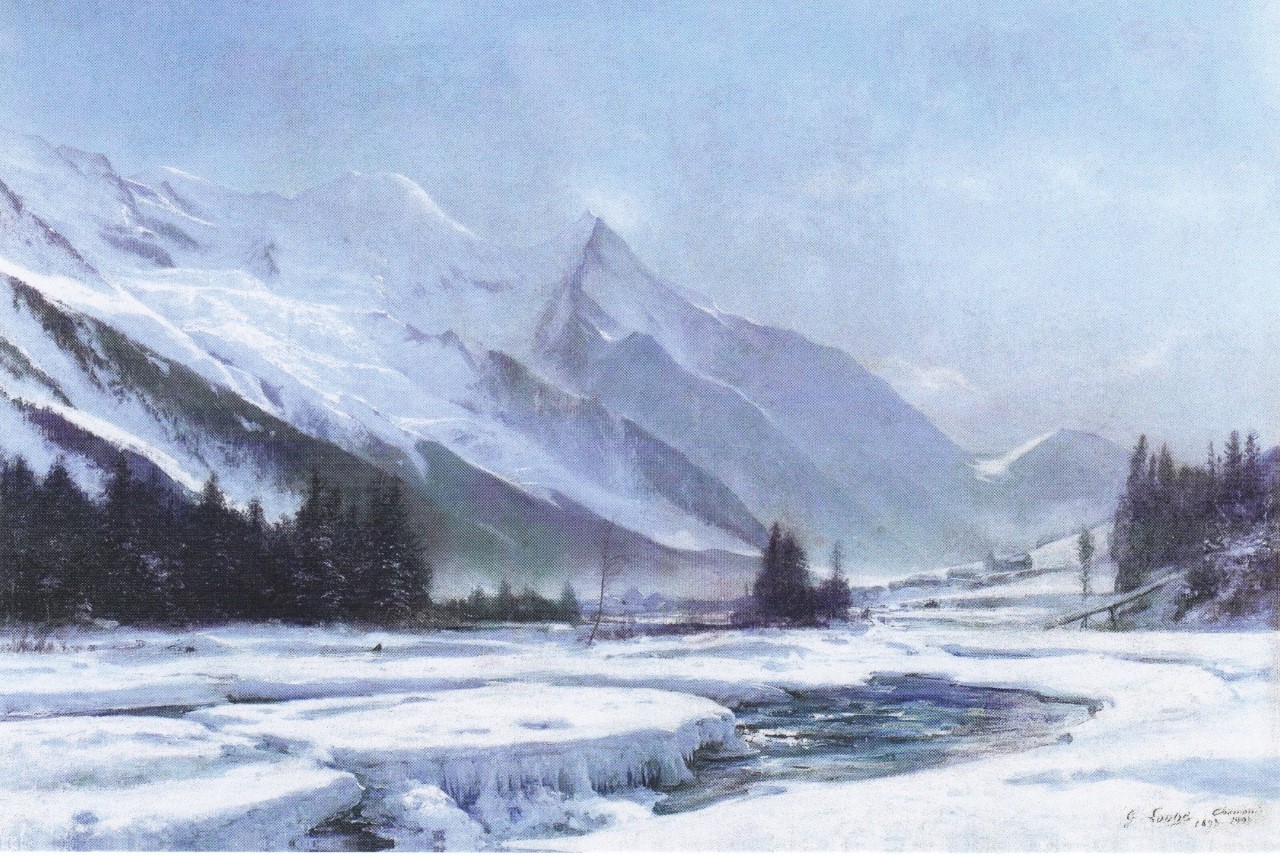
Vallée de Chamonix en hiver - coll. les Amis du Vieux Chamonix
At the time, the Mont Blanc massif was not yet fully mapped and photography was not developed enough to be a reference to mountaineers before they embarked on mountain enterprise. Loppé's paintings were of such geographical precision that they provided invaluable detail of the landscape to those undertaking an ascent.
In 1864, Gabriel Loppé was bestowed the honour of becoming the first French member of the Alpine Club. The motion was proposed by Sir Alfred Wills (founding Alpine Club member) and seconded by Sir Leslie Stephen.
Loppé's paintings were much appreciated by the British, as indeed were his personal qualities.
Sir Douglas Freshfield was heard to remark:
"He only needs to push open the door of the A. C. for an alpine wind to follow him."
William Mitchell, gallery owner in London, specialist in the work of Loppé
In September 2021, Les Amis de Gabriel Loppé organized a round table evening dedicated to Loppé's memory in the salons of the Majestic in Chamonix. The gallerist, mountaineer and member of the Alpine Club William Mitchell came especially from London to talk about his passion for Loppé's works. He was accompanied by the British landscape painter James Hart Dyke. Both men confirmed their participation in the "Artistic Ascension 2022" project 'In the footsteps of Gabriel Loppé'
Indeed, on July 5, 2022 the English painter James Hart Dyke retraces the footsteps of Gabriel Loppé by making an ascent of Mont Blanc with his painting material. The party took the historic route via the Grands Mulets and Hart Dyke produced several paintings during the ascent to pay tribute to his illustrious predecessor. The logistics and guiding were managed masterfully by renowned high mountain guide, Christophe Profit.
James Hart-Dyke in the footsteps of Gabriel Loppé with W. Mitchell and C. Profit - ©Pascal Tournaire
Loppé, by his personality and by his work, has strongly marked the territory of the Chamonix Valley and has contributed massively to the enrichment of Chamonix's heritage.
Loppé, a resolutely modern man
Through his paintings, his drawings and his photographs, we follow the itinerary of an artist and a man who travels through space and time, witnessing the technical innovations of which he was among the first spectators and consumers (photography, steam trains, electricity that transforms cities, etc.).
During his last years, Loppé was fascinated by photography and innovated a lot in this field. His photograph of the Eiffel Tower struck by lightning is now part of the collections of the Musée d'Orsay in Paris.
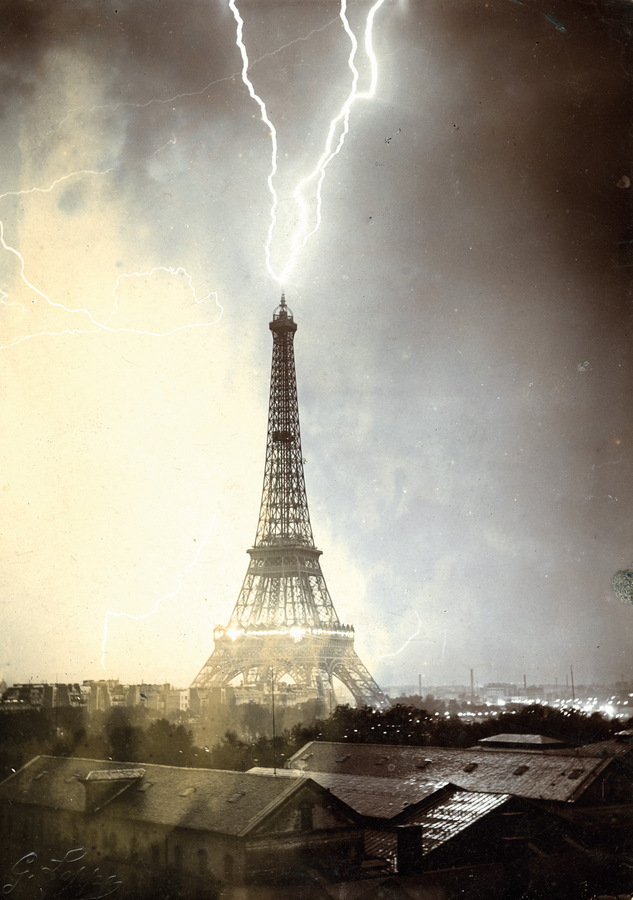
Discover the Loppé exhibition at the Fort de Bard, Italie
From December 17, 2022 to January 14, 2024, the Fort de Bard has been hosting an exhibition entirely devoted to Gabriel Loppé, painter, photographer, mountaineer and traveller, in the Musée des Alpes. The exhibition, organized by the Fort de Bard, by Anne Friang, from the association Les Amis de Gabriel Loppé and by William Mitchell from the John Mitchell gallery in London (both exhibition curators), offers more than 100 works, paintings, drawings, photographs and objects by Gabriel Loppé. The 65 paintings, from private and public collections, represent the artist's work over a period of 50 years, from the 1860s to the beginning of the 20th century.
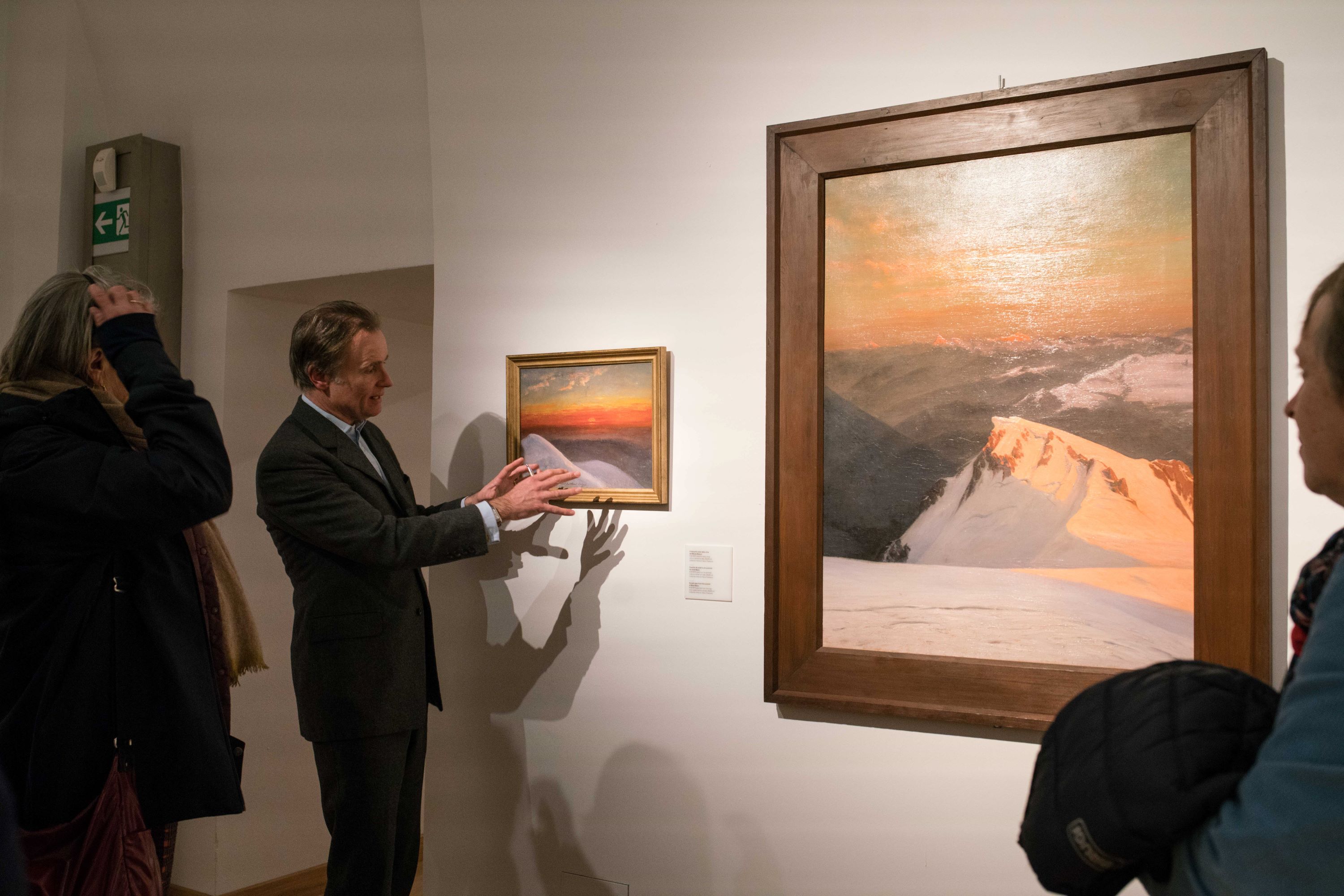
Opening of the Ford de Bard exhibition with curator William Mitchell
In addition to the central theme of the mountains, the exhibition reveals the artist's production during his many trips and stays in the main European capitals, London and Paris, as well as in Scotland, where he represents landscapes, rivers and rocky cliffs overlooking the sea.
Associations to preserve the heritage Gabriel Loppé
The association Friends of Gabriel Loppé, whose president is Anne Friang, great-great-granddaughter of the artist, has set itself objectives: to create events to promote the work of the artist and his notoriety , encourage the acquisition of his works by public institutions, initiate a foundation around the artistic heritage of the painter and develop the existing archives.
The Gabriel Loppé Committee aims to issue certificates of authenticity for the works submitted to it. The committee also manages the production of a catalogue of the works of Gabriel Loppé, i.e. it lists all the works of which it is aware and which are submitted to it. This artist's committee for the painter Gabriel Loppé aims to protect his work and to keep a watch on the market for national and international transactions generated by his paintings.
The Friends of Old Chamonix association, founded in 1969, has set itself the goal of safeguarding the heritage of the Chamonix valley. It has acquired around forty works by the painter Gabriel Loppé so that they remain in the valley. 25 of these paintings are currently at the Fort de Bard, where they will be exhibited for a year, until January 2024.
For we 21st century visitors, these canvases bear witness to the landscapes of the valley, images that are all the more precious as they are temporal in the face of change.
Sources, extracts of texts and images: